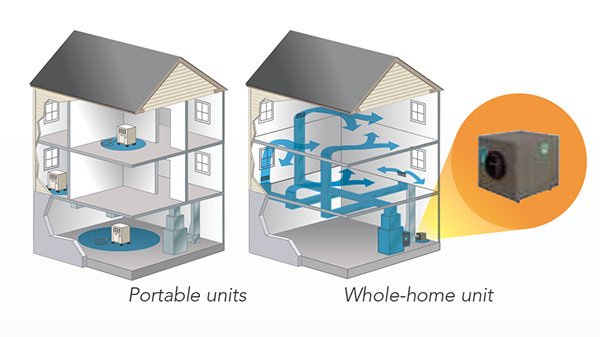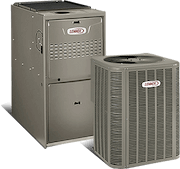If you have ever experienced a winter in Missouri, you know how low indoor humidity can get. This is because cold air is denser and cannot hold as much moisture as warmer air. Though the ideal humidity in winter is around 45 percent, many people find their homes hovering as low as 15%! While dry air can be uncomfortable, it can also cause many other (and more serious) problems as well.

Read on to find out more about six of the most common low indoor humidity problems and what you can do about them.
- Respiratory Problems and Disease: Your throat and nose, along with the rest of your upper respiratory system do quite a bit to help fight off disease and keep you healthy. The moist membranes lining the system help catch dust, dirt, bacteria, and viruses before they get a chance to get into your lungs. Low indoor humidity can cause these membranes to dry out, making them far less effective. Making sure your home is at the ideal humidity can therefore help you prevent illness and increase overall health.
- Itchy and Irritated Nose: Dry air from low indoor humidity can also cause irritation in your nose, which is often itchy and unpleasant. In addition to being uncomfortable, dry air can also lead to nosebleeds. Keeping humidity at recommended levels can help prevent these issues and keep your nose healthy.
- Dry Skin and Painful Cracking: Your skin is 50% water, so it is no surprise that low indoor humidity can seriously dry it out. This leads to itching, irritation, flaking, and tightness around the joints. In overly dry conditions, you can experience chapped lips, cracking skin, and you may even see flare-ups of existing skin conditions such as acne and eczema.
- Static Electricity: You may not realize this, but low indoor humidity contributes to the buildup of static electricity. Not only is it inconvenient to have clothes that will not stop clinging to each other, but the painful shocks from touching doorknobs and other metal surfaces gets old really fast. By using a humidifier to prevent low indoor humidity, the electricity gets dissipated along with your problems!
- Home Damage: In addition to the health can comfort problems that come from dry air, it can also cause significant damage to your house. Dry air wants to absorb moisture any way and from anywhere it can – including the structure of your house. One of the first ways you may notice low indoor humidity is that wooden floors will begin to creak more as the air dries out. In fact, dry air can pull moisture from any wooden structure in your home. Because of this, low indoor humidity can lead to door jambs and walls to shift, causing doors that will not close, and gaps between ceilings and walls. When these gaps form in wooden windows, they allow cold air to enter your home and severely decrease your energy efficiency.
- Damage to What is Inside Your Home: As mentioned above, low indoor humidity lead to the drying and warping of anything wood in your house, this is not just limited to the physical structure but to belongings like instruments, furniture, and even artwork. Maintaining proper humidity levels in your house will protect your belongings from damage as well as keep you comfortable.
What to Do About Low Indoor Humidity and Dry Air
The answer to these problems is relatively straightforward – you need a whole-home humidifier! There are two basic types to consider: bypass and power. Each type will help prevent the aforementioned problems due to low indoor humidity throughout the entire house.

To learn more about whole-home humidifiers, and to finally fix your low indoor humidity problem, contact us today! The heating & air conditioning experts at Galmiche & Sons in St. Louis are always happy to help you find a solution to your HVAC problems!









